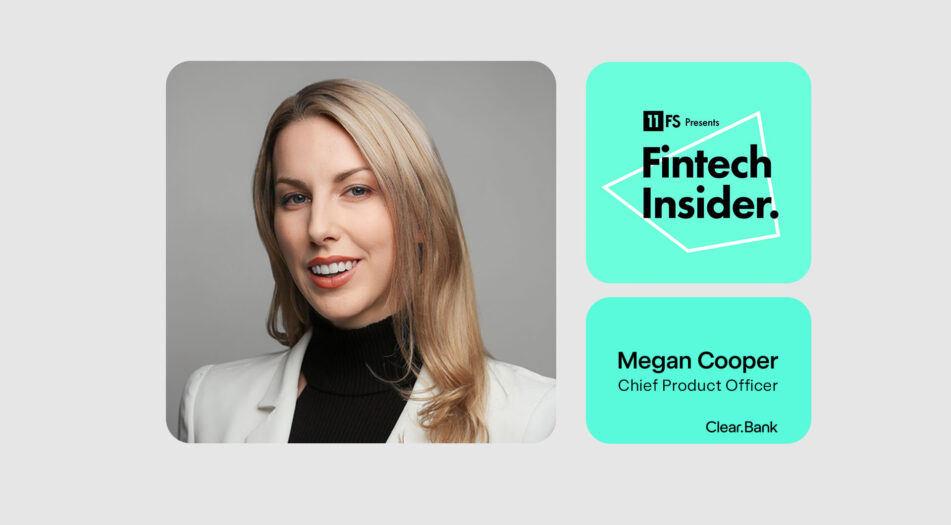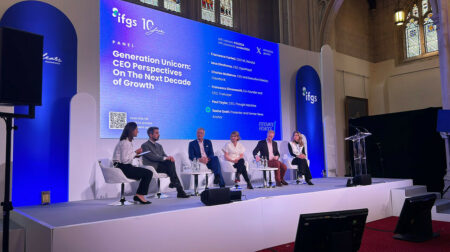Personalisation in banking – are we there yet?

I recently had the pleasure of being a guest on the Fintech Insider Insights podcast, examining the development of personalisation in banking. The episode built on a recent 11:FS Pulse 2024 trends report with input from experts at Monzo, Nationwide and others, that revealed tailored financial services and customer-centricity as a critical trend for the next twelve months, and beyond.
The more cynical among you may say, ‘haven’t we heard that before – why now?’
So, alongside 11:FS Pulse’s Joe Colchester, Ross Logan, Chief Product Officer at Snoop and Alok Kumar, Product Manager at Chip, we dove into some of the considerations around what personalisation means, how it gets delivered and how that might change in the future.
Below are some of my highlights and takeaways from the conversation.
"It's about giving customers that element of control back and that flexibility. So, it’s really leveraging that to allow the customer to feel like they're building their wealth in a way that is solving problems that are specific to them.”
We’re used to receiving personalised and tailored services in our everyday lives, in exchange for using our data (personal, behavioural and locational). And yet, while banks have segmented customer bases and products, they have only really scratched the surface of what personalisation really means.
Ross Logan from Snoop commented: “Personalisation is about using technology and data, understanding customers as people to develop products, services and experiences that meet their needs. It's weird that banks aren't more personalised because they've got access to a data set that ultimately is the thing that could drive the most personalisation out of any industry.”
For Chip’s Alok Kumar, personalisation centres on the need to proactively support customers with actionable insights.
“What we're finding when it comes to personalisation, we know we need to know the customer better than they know themselves. It's not just about the data,” he explained. “While the data is super important, and we're in an age where we can process and do so much more with that data, it's about giving customers that element of control back and that flexibility. So, it’s really leveraging that to allow the customer to feel like they're building their wealth in a way that is solving problems that are specific to them.”
There was consensus that we’re at a point where the technology has caught up to the concept. We’ve already seen ‘fintech 1.0’ personal financial management (PFM) services that give a view of a person’s financial life with spending breakdowns and analysis. These services are now evolving, actively suggesting methods for saving more or gaining better interest rates and that, in turn, creates a strong foundation to then make meaningful personalisation a reality.
Snoop’s Ross Logan also referenced initiatives such as the UK’s Open Banking regime, as a catalyst for this evolution.
“Ultimately, the data belongs to the customer, but it's not working hard to do anything for them. So, if we can have more products and services based on Open Banking, that is trying to put people back in control of the data and try to generate better outcomes for them,” he explained.
“The thing that's going to be really interesting in 2024 is who's going to take the first step in using that Open Banking data to personalise the financial products that could sit below it, for example, credit decisions.”
Conversation inevitably turned to whether AI would aid the transition and bring new services to market by delivering more contextual information or find signals of issues before they occur. While that all sounds a little Minority Report, the practical applications offer significant upside to helping consumers manage their finances and solve their financial problems.
For example, it could be used to set an ‘autopilot’ where it could scan the market for the best interest rates on savings accounts or mortgage deals and automatically switch on your behalf, sweeping funds between accounts using variable recurring payments (VRP). Ultimately, with open finance and open data it could also examine your biggest outgoings, such as household bills and scan utility providers and automatically switch on your behalf whenever that made sense.
Snoop’s Ross Logan agreed AI’s ability to drive greater efficiency in the decision-making process: “We're really excited about it, in the context of Snoop, around predictive analytics for customers and this whole idea of spotting the problems before they become problems."
Alok Kumar added that a theme to emerge during Chip’s proposition design research was how to make customers feel like they weren’t an outlier in how they managed their finances or the issues they were facing. AI could play a role in delivering comparative and contextual information alongside query models.
“I don't know whether there's an element of competition or empathy, but customers react so much better to knowing that they're not alone. I wonder if maybe in the next few years, we'll see personalisation and AI having more of a steer towards peer analysis,” he explained. “There's another layer to that comparison that can extrapolate, ‘if I start investing today when I'm 25 vs 30 or 35?’ and being able to show people what the outcomes look like. That kind of modelling isn’t available to everyone.”
When it comes to our financial lives, there’s a fine line between personalised and potentially intrusive. There’s a tension between the desire to give customers choice, the ability to configure that and do so in a way that supports their requirements.
Every guest mentioned the risk of firms overusing the data to upsell in a way that comes across as jarring to the user when the focus should be solving problems and helping the customer. There is also a compliance aspect, such as Consumer Duty rules, that could create new challenges related to explaining and evidencing how and why AI recommended a specific product and whether that delivered a good customer outcome.
“We see customers all the time querying why we use their transaction data and things like that. Using it responsibly is really important. As long as we're understanding and empathising with the customer and understanding how we would feel if our data was being used in that way is a really helpful indicator of whether we are going too far.”
Concluding the discussion, we returned to the issue of ensuring every interaction the customer has with a product is thought through, and consistent with everything that they see before and after. And, crucially, relevant to that customer as an individual with their own circumstances, requirements and concerns. Otherwise, we risk creating a new wrapper around the same old products.
That path won’t be straightforward.
The problem isn’t a lack of data. But having the data doesn’t mean it’s accessible or clean, or even in a format that can extracted. Personalisation is only possible through real-time data and enhanced capabilities offered by AI and machine learning tools that can harness behavioural and contextual inputs.
In 2024, we’ll start to see firms embrace those opportunities and deliver the experiences that consumers receive in other facets of their lives. Being where the customer wants, when they need it, with the financial services products that meet their needs and expectations.
You can listen to the full episode here or via your usual Podcast apps by searching for Fintech Insider.
Megan (Caywood) Cooper is the Group Chief Product Officer at ClearBank. She is leading the bank’s product strategy, creating and executing its roadmap at a crucial time during expansion into new markets while assisting in the development and maintaining the bank’s capabilities, aligning them with customer needs. Prior to joining ClearBank in 2024, Megan was Chief Product Officer for the Barclays UK business after having spent 4 years as the Chief Platform Officer at Starling, which she joined as the 5th employee. She is also a board member of the UK Finance Digital, Technology, Cyber Products and Services team and was named in Forbes 30 Under 30 in 2018.


